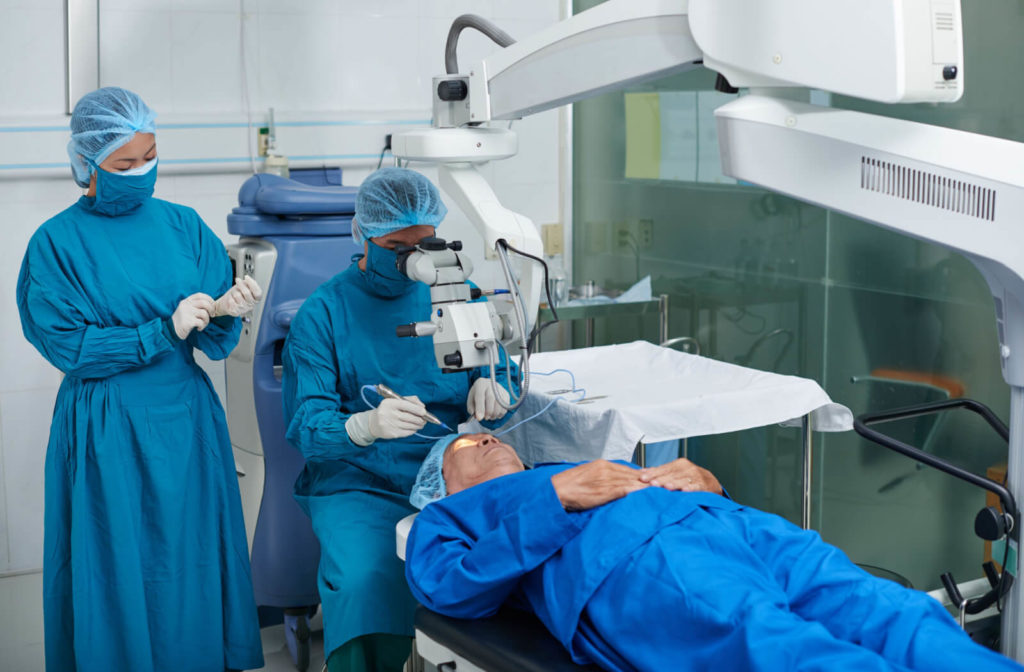Why Picking an Eye Doctor Optometrist is Essential for Your Eyes
Why Picking an Eye Doctor Optometrist is Essential for Your Eyes
Blog Article
Discovering the Newest Technical Developments in Optometry and What They Mean for Eye Doctors
From the precision of Optical Coherence Tomography to the nuanced understandings supplied by AI-driven analysis tools, these developments are setting brand-new standards in client analysis and treatment. As these developments penetrate the technique, eye doctors are faced with the obstacle of welcoming these devices to enhance client results.
Innovations in Diagnostic Equipment
Progressing the field of optometry, technologies in diagnostic tools have actually changed the way eye care experts analyze and detect ocular problems and visual impairments. The past years has actually seen significant technological innovations, enabling even more extensive and accurate analyses. Optical Comprehensibility Tomography (OCT), for instance, supplies high-resolution cross-sectional photos of the retina, permitting the very early discovery of conditions such as glaucoma and age-related macular degeneration. This non-invasive imaging strategy has actually come to be vital in modern optometric method.
Another key innovation is the introduction of advanced corneal topography systems, which map the surface curvature of the cornea with accuracy. These devices are particularly advantageous for fitting get in touch with lenses and detecting corneal disorders. Electronic retinal imaging has changed conventional ophthalmoscopy, supplying comprehensive, panoramic views of the retina that assist in extensive visual assessments.
The development of wavefront aberrometry has actually additionally been crucial, enabling the evaluation of refractive errors with unparalleled precision (Eye Doctor Optometrist). This modern technology assists in customizing corrective lenses and enhancing surgical end results for refractive surgeries. Jointly, these analysis improvements encourage optometrists to supply superior patient care, ensuring very early treatment and customized treatment techniques, inevitably enhancing visual wellness results
AI in Individual Administration
Building on the structure of sophisticated diagnostic devices, the incorporation of man-made intelligence (AI) in patient administration represents a transformative leap for optometry. AI systems are progressively used to boost efficiency, accuracy, and customization in individual care.
Moreover, AI-driven platforms help with structured individual communications and administrative procedures. Automated scheduling, digital assessments, and customized follow-up strategies not only boost individual contentment but likewise enhance time administration for practitioners. These systems can triage individuals based upon the urgency of their problems, making certain that those in critical requirement receive punctual focus.
Moreover, AI boosts decision-making by supplying optometrists with evidence-based recommendations and treatment paths. By incorporating data from electronic wellness documents, AI tools use understandings that notify medical decisions, reducing the threat of mistakes and improving person outcomes. As AI remains to evolve, its role in person monitoring will likely expand, reshaping the landscape of optometric care.
Breakthroughs in Retinal Imaging
In the realm of optometry, retinal imaging has actually seen impressive technical innovations that are enhancing analysis capabilities and client care. Developments such as Optical Coherence Tomography (OCT) and fundus photography have actually reinvented just how eye doctors evaluate the retina and imagine. OCT, particularly, supplies high-resolution, cross-sectional pictures of the retina, permitting the detailed exam of its layers. This capacity is invaluable for early detection and administration of conditions like glaucoma, diabetic person retinopathy, and age-related macular deterioration.
Enhanced imaging methods like OCT angiography are more refining diagnostic accuracy. Optometrist Chino. Such developments assist in the recognition of minute retinal changes that might indicate disease development.
In addition, innovations in expert system are augmenting retinal imaging by enabling automated analysis of huge datasets. These systems assist optometrists in recognizing patterns a sign of pathology, thereby boosting analysis precision and effectiveness. Collectively, these advancements are transforming retinal imaging into a foundation of modern-day eye care, improving results and broadening restorative opportunities.
Teleoptometry's Expanding Role
Teleoptometry is progressively becoming an important part of eye treatment, driven by innovations in electronic go to my blog interaction and analysis devices. This is particularly useful in underserved and country locations where accessibility to specialized eye care is often restricted.
The assimilation of expert system (AI) more enhances teleoptometry, allowing the evaluation of aesthetic data and assisting in the detection of ocular problems such as glaucoma and diabetic person retinopathy. AI-powered algorithms can rapidly analyze complex imaging data, supplying eye doctors with useful insights that boost professional decision-making.
In addition, teleoptometry sustains connection of treatment with smooth integration with digital health documents (EHRs), allowing eye doctors to keep detailed patient histories. This ensures that clients obtain individualized and constant treatment also when seeking advice from different specialists.
Regardless of these benefits, difficulties stay, including making certain data security and handling person assumptions. Teleoptometry represents a significant stride in the direction of even more available, efficient, and patient-centered eye care. As technology develops, its function is positioned to broaden better.

Future Patterns in Eye Care
A myriad of cutting-edge fads is readied to reshape the future of eye care, driven by technical innovations and the developing needs of people. One substantial trend is the assimilation of expert system (AI) in diagnostics, which promises to improve the accuracy and efficiency of eye evaluations. AI formulas can evaluate substantial quantities of data from retinal photos, possibly finding problems like diabetic person retinopathy and glaucoma earlier than conventional techniques.
Furthermore, tailored medication is obtaining grip in optometry, with hereditary testing informing customized therapy strategies. This method aims to optimize client end results by tailoring treatments to private genetic accounts. Wearable modern technology, such as smart contact lenses, is additionally coming up, providing real-time tracking of intraocular pressure or glucose degrees, thus providing continual understandings into systemic and eye health and wellness.
The adoption of increased reality (AR) and digital truth (VR) in training and client education and learning is an additional arising pattern. These technologies provide immersive experiences that can improve understanding and abilities both for eye doctors and patients. As these trends advance, optometrists need to published here remain abreast of technical innovations to offer sophisticated care, guaranteeing enhanced individual end results and complete satisfaction in the vibrant landscape of eye care.
Verdict

Collectively, these analysis innovations encourage optometrists to provide remarkable individual care, ensuring very early treatment and customized therapy strategies, ultimately boosting visual wellness end results.

As these technologies continue to advance, optometrists must adjust and include them into method, eventually optimizing process effectiveness and boosting the requirement of eye care delivered to people.
Report this page